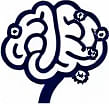Hindsight Bias: Understanding Its Impact
 by Lilian Nienow
by Lilian Nienow
Hindsight bias is a cognitive tendency that makes past events appear more predictable than they were. This article examines how it influences decision-making in daily life and professional settings, and offers practical steps to recognize and reduce its effects. By fostering awareness, individuals can improve their cognitive habits.

Hindsight bias is a cognitive tendency where people believe that an event was more predictable after it has occurred. This can distort perceptions and lead to faulty conclusions. For instance, after a major event like a stock market crash, individuals might think they could have foreseen it, even if the signs were not clear at the time.
In psychology, hindsight bias plays a significant role in how memories are formed. People often reconstruct past events to make them seem inevitable, which can affect learning processes. This distortion might cause someone to overlook the actual uncertainties involved.
Consider a business scenario where a project fails. Team members may later claim that the failure was obvious, blaming poor planning. Such views can hinder future strategies by ignoring the real complexities of decision environments.
One common example is in sports. After a game, fans and analysts might say that the outcome was clear from the start, even though the match was full of surprises. This illustrates how cognitive bias like hindsight can alter perceptions.
The effects of this bias extend to professional fields. In medicine, doctors might reflect on a misdiagnosis and feel that the symptoms were straightforward, leading to overconfidence in future cases. Recognizing these patterns is essential for better practices.
How Hindsight Bias Develops
This bias often stems from the way the brain processes information. When recalling events, people tend to fill in gaps with knowledge gained afterward, creating a false sense of foresight. This can be seen in historical analyses, where events are described as inevitable paths.
In education, students might review exam questions and think they knew the answers all along, which discourages honest self-assessment. Teachers can address this by encouraging reflective journals that capture thoughts in real time.
Business leaders face challenges too. After a market shift, executives may critique past decisions harshly, assuming they should have anticipated changes. This can stifle innovation if not managed properly.
To counter this, one effective method is to document decisions and the uncertainties at the time they are made. By reviewing these records later, individuals can see the actual ambiguity involved.
Practical Ways to Overcome Hindsight Bias
There are several strategies to mitigate the influence of this bias. First, maintain detailed records of decision processes. This helps in recreating the context accurately when reviewing outcomes.
Another approach is to seek diverse perspectives during planning. By involving team members with different viewpoints, groups can challenge assumptions and reduce the risk of retrospective distortions.
In personal development, practicing mindfulness can aid in distinguishing between past realities and current interpretations. This involves pausing to question whether an event truly seemed predictable at the time.
Workshops on decision making often include exercises that simulate uncertain scenarios, helping participants experience the ambiguity firsthand. These activities build empathy for past choices and foster more balanced evaluations.
Research in cognitive development shows that awareness of biases like this one can lead to improved problem-solving skills. For example, therapists use techniques to help clients reframe past events without imposing hindsight.
Real-World Applications
In legal contexts, this bias can affect jury decisions. Jurors might view a defendant's actions as obviously wrong after hearing all the evidence, even if the situation was unclear initially. Judges sometimes instruct juries to consider the information available at the time of the event.
Similarly, in investing, advisors encourage clients to evaluate portfolios based on contemporary data rather than later outcomes. This prevents emotional reactions driven by distorted memories.
For lifelong learners, understanding this bias enhances critical thinking. It encourages a more nuanced approach to history and science, where events are seen as products of multiple factors.
By applying these insights, individuals in various fields can make more informed choices. For instance, project managers might hold debrief sessions that focus on what was known versus what was learned later.
The Role in Personal Growth
On a personal level, this bias can impact relationships. People might regret decisions in hindsight and assume they were avoidable, leading to unnecessary guilt. Recognizing the bias allows for kinder self-reflection.
Parents, for example, may look back on child-rearing choices and think they should have been obvious, but in reality, parenting involves constant adaptation. Embracing this can promote healthier family dynamics.
In summary, while hindsight bias is a natural part of cognition, it can be managed through deliberate practices. By documenting thoughts, seeking feedback, and maintaining awareness, people can minimize its effects and enhance their decision-making abilities.
